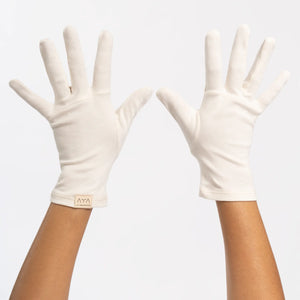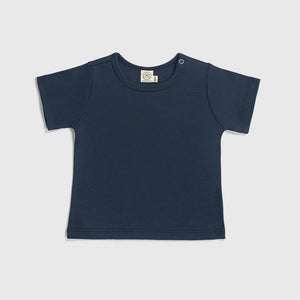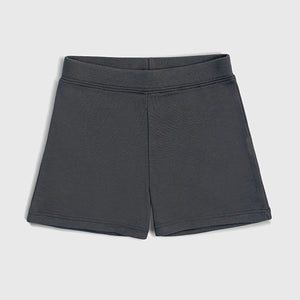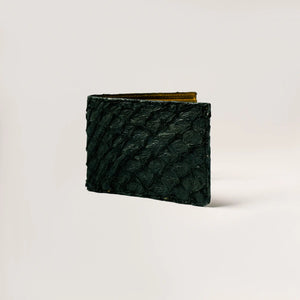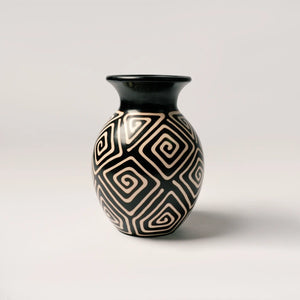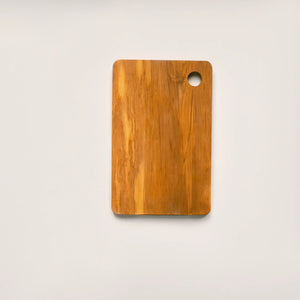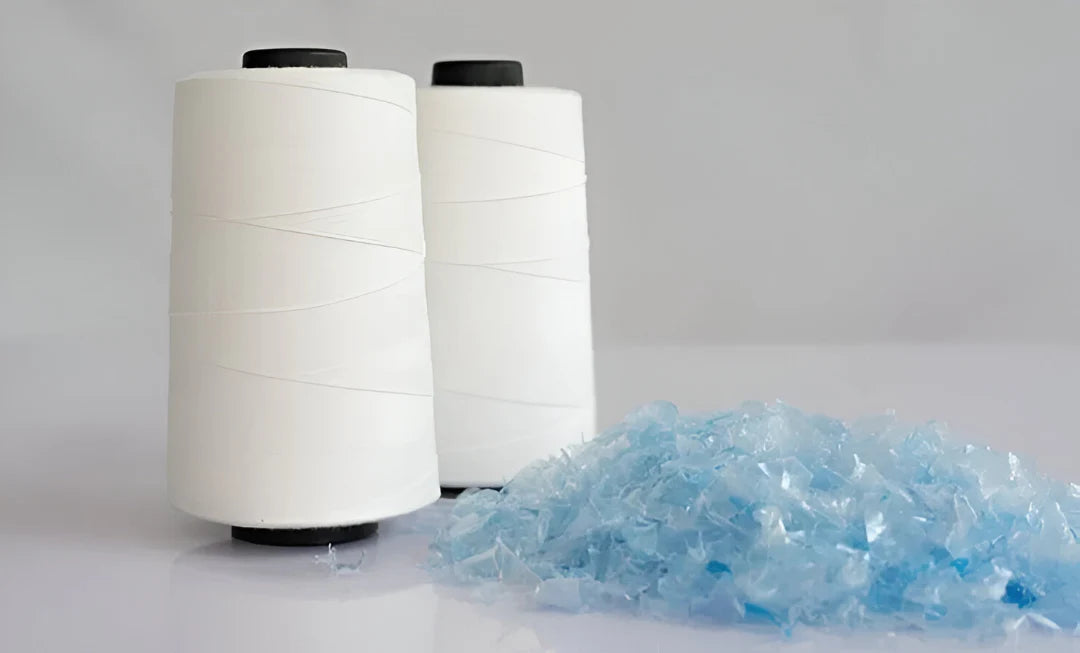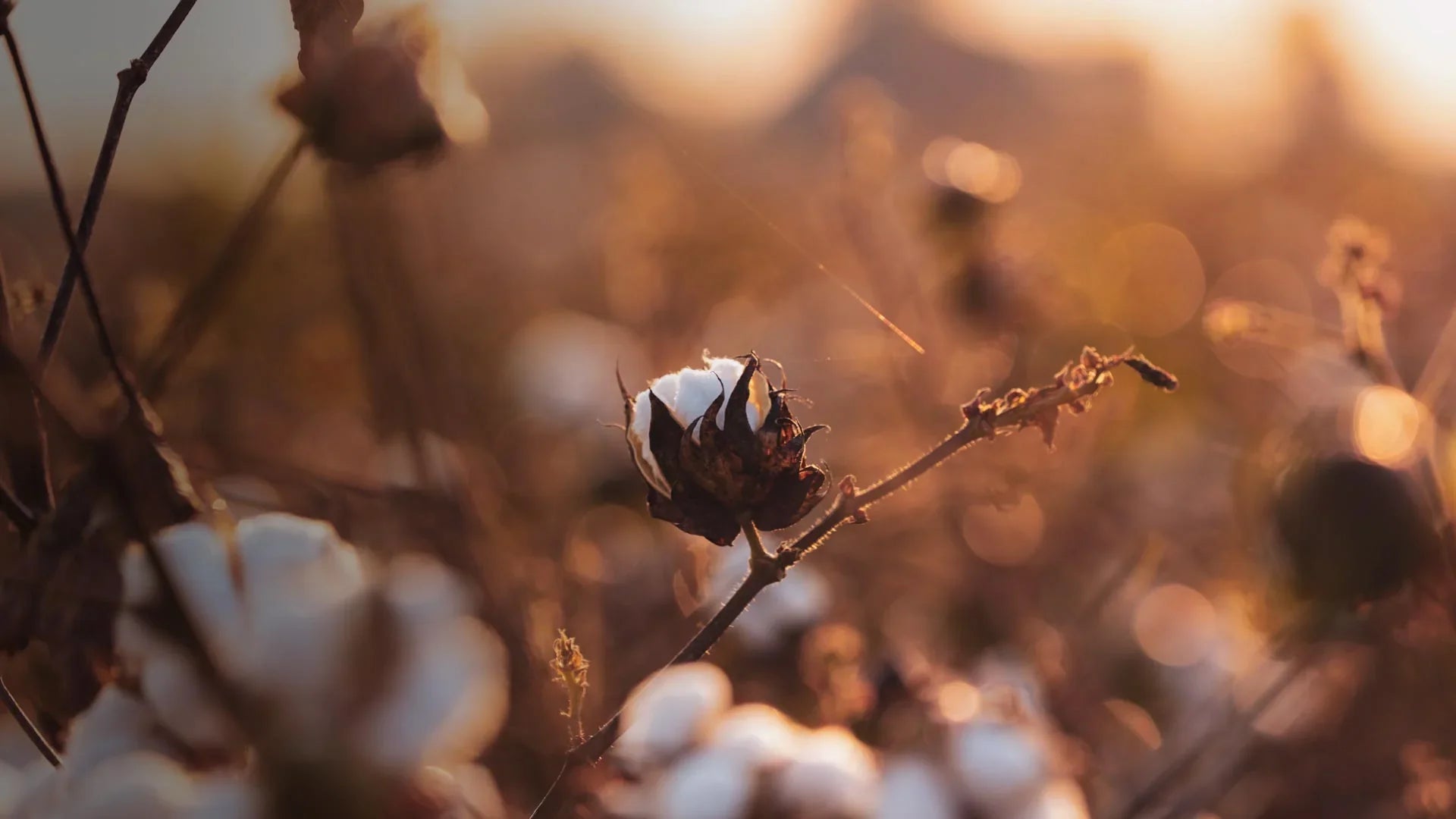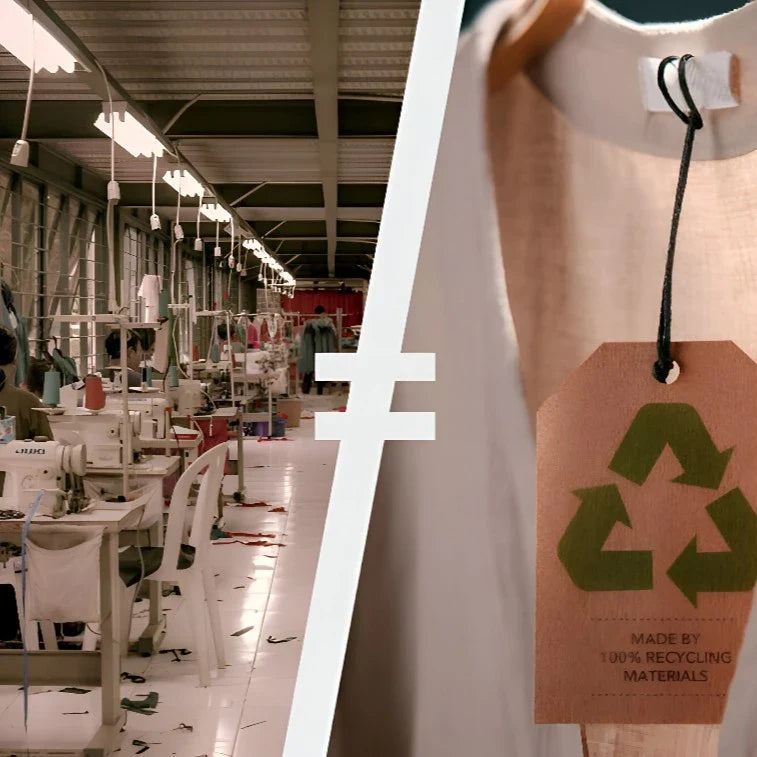The Ancient Origins of Indigo Dye in Peru:
A 6,000-Year Legacy
.
AYA | FEBRUARY 6, 2025
READING TIME: 5 minutes
Indigo dye is one of the world’s most iconic natural pigments, used for centuries in textiles across the globe. But did you know that the oldest known use of indigo dye was discovered in Peru? Long before the rise of the great civilizations of Egypt, Mesopotamia, or China, ancient Peruvians were already mastering the art of dyeing textiles with this deep blue pigment.
From pre-Hispanic textiles to modern eco-friendly fashion, indigo continues to be a powerful symbol of cultural heritage and sustainable dyeing practices. Let’s explore the fascinating origins of indigo dye in Peru and how its legacy continues to inspire the world today.
The World’s Oldest Indigo-Dyed Textiles: A Discovery in Peru
In 2016, archaeologists made a groundbreaking discovery at Huaca Prieta, a pre-ceramic site on the northern coast of Peru. Researchers found ancient textiles dyed with indigo, dating back 6,000 years, making them the oldest known indigo-dyed fabrics in the world [1].
This finding predates the earliest recorded use of indigo in Egypt’s Fifth Dynasty (~4,400 years ago) by about 1,500 years [1]. The discovery significantly changes our understanding of the history of textile dyeing, proving that Andean cultures had developed advanced dyeing techniques long before other civilizations.

Ancient textile fragments analyzed by Jeffrey C. Splitstoser’s research team, revealing the earliest known use of indigo dye in Peru, dating back over 6,000 years [1].
What Was Used to Make Indigo in Ancient Peru?
The blue pigment found in the textiles from Huaca Prieta was identified as indigotin, the key component of indigo dye [1]. The likely source of this dye was Indigofera spp., a plant native to South America, though other native plants such as Justicia colorifera, Koanophyllon tinctorium, and Cybistax antisyphilitica may have also been used [1].
Why Is This Significant?
- This discovery proves that Peruvian cultures were pioneers in textile dyeing, using natural plant-based dyes long before synthetic alternatives existed.
- It highlights the deep relationship between indigenous cultures and their environment, as they sourced dyes from native plants in a sustainable way.
- The presence of indigo in early Andean textiles suggests that color symbolism played a crucial role in their cultural and artistic expression.

Indigofera suffruticosa. Picture by Shyu in PictureThis.
Indigo Dyeing in Later Andean Civilizations
While Huaca Prieta holds the earliest evidence of indigo use, the tradition of dyeing textiles with natural pigments continued for centuries. By the time of the Tumilaca and Chiribaya cultures (circa 1,000 AD), indigo was commonly used in textile production in southern Peru [2].
Key findings from later Andean civilizations
- Chiribaya textiles contained blue and green shades, likely achieved by combining indigo with yellow pigments [2].
- Tumilaca culture textiles also showed traces of indigo, though the exact plant source remains uncertain [2].
- Dyeing techniques varied—some textiles used mordants (fixatives) to enhance color vibrancy, while others relied purely on plant-based dyes [2].
Indigo in the Global Context: How It Spread Beyond Peru
Although indigo was used in South America, Africa and Asia around the same time in history, the plant species varied by region [3]:
- Indigofera tinctoria: Cultivated in India and widely traded across Asia and Europe.
- Indigofera suffruticosa: Common in the Americas, particularly in Peru and Central America.
- Isatis tinctoria (woad): Used in Northern Europe before trade routes brought true indigo.
During European colonization, indigo became a major export from the Americas and West Indies, fueling the global textile industry [3]. However, its origins in Peru highlight how ancient Andean cultures independently mastered indigo dyeing thousands of years before global trade networks existed.

Changing Demographics and Preferences
The pandemic also highlighted shifting demographics in the fashion market. Younger consumers, particularly Gen Z and Millennials, became increasingly influential in shaping purchasing trends. Research from the Institute for Sustainable Fashion indicates that younger generations are more likely to support sustainable brands, with 83% of Millennials stating they prefer to buy from companies that share their values [7,8].
Moreover, with the rise of remote work, many consumers reported a preference for comfort over style. A study published in the Journal of Fashion Marketing and Management noted that comfort became the primary driver of clothing purchases for many consumers, with 65% prioritizing comfort in their buying decisions [9]. This trend is likely to persist as remote work becomes a more permanent aspect of many industries.

Changing Demographics and Preferences
The pandemic also highlighted shifting demographics in the fashion market. Younger consumers, particularly Gen Z and Millennials, became increasingly influential in shaping purchasing trends. Research from the Institute for Sustainable Fashion indicates that younger generations are more likely to support sustainable brands, with 83% of Millennials stating they prefer to buy from companies that share their values [7,8].
Moreover, with the rise of remote work, many consumers reported a preference for comfort over style. A study published in the Journal of Fashion Marketing and Management noted that comfort became the primary driver of clothing purchases for many consumers, with 65% prioritizing comfort in their buying decisions [9]. This trend is likely to persist as remote work becomes a more permanent aspect of many industries.

Changing Demographics and Preferences
The pandemic also highlighted shifting demographics in the fashion market. Younger consumers, particularly Gen Z and Millennials, became increasingly influential in shaping purchasing trends. Research from the Institute for Sustainable Fashion indicates that younger generations are more likely to support sustainable brands, with 83% of Millennials stating they prefer to buy from companies that share their values [7,8].
Moreover, with the rise of remote work, many consumers reported a preference for comfort over style. A study published in the Journal of Fashion Marketing and Management noted that comfort became the primary driver of clothing purchases for many consumers, with 65% prioritizing comfort in their buying decisions [9]. This trend is likely to persist as remote work becomes a more permanent aspect of many industries.

Changing Demographics and Preferences
The pandemic also highlighted shifting demographics in the fashion market. Younger consumers, particularly Gen Z and Millennials, became increasingly influential in shaping purchasing trends. Research from the Institute for Sustainable Fashion indicates that younger generations are more likely to support sustainable brands, with 83% of Millennials stating they prefer to buy from companies that share their values [7,8].
Moreover, with the rise of remote work, many consumers reported a preference for comfort over style. A study published in the Journal of Fashion Marketing and Management noted that comfort became the primary driver of clothing purchases for many consumers, with 65% prioritizing comfort in their buying decisions [9]. This trend is likely to persist as remote work becomes a more permanent aspect of many industries.

The Environmental Impact of Indigo Dye: Ancient vs. Modern Practices
While natural indigo has been used for millennia, synthetic indigo, developed in the 19th century, has led to environmental challenges. The fashion industry, particularly fast fashion, heavily relies on synthetic dyes that:
- Release chemical pollutants into waterways.
- Contain toxic heavy metals harmful to ecosystems.
- Contribute to microplastic pollution when used in synthetic fabrics.
Why Natural Indigo Matters Today
At AYA, we believe in returning to nature’s solutions. Natural dyes, including indigo, offer a sustainable alternative to synthetic chemicals. By choosing garments organic Pima cotton and Alpaca wool dyed with environmentally responsible methods, we continue the ancient Peruvian tradition of using natural, biodegradable materials that respect the environment.

Natural indigo pigment derived from Indigofera spp., showcasing the traditional dyeing process that has been used for thousands of years in Peru and around the world.
The Legacy of Indigo Dye in Peru Lives On
The discovery of 6,000-year-old indigo-dyed textiles in Peru proves that Andean cultures were far ahead of their time in textile production. From Huaca Prieta to the Inca Empire, Peruvian civilizations mastered the art of dyeing, weaving, and sustainable fabric production long before the industrial revolution.
What Can We Learn from Peru’s Indigo History?
- Sustainable dyeing is possible—Ancient Peruvians used plant-based dyes with minimal environmental impact.
- Textile traditions are deeply rooted in culture—Indigo was not just a color, but a symbol of identity and artistry.
- Eco-friendly fashion is the future—By choosing natural fibers and dyes, we can honor ancient wisdom while protecting our planet.
At AYA, we are inspired by Peru’s rich textile heritage. By crafting organic clothing with sustainability at its core, we carry forward the legacy of natural, ethical, and eco-conscious fashion.
Experience the timeless beauty of Natural dyeing in our garments, made with natural materials and traditional techniques that reflect the artistry of ancient cultures. Together, we can celebrate the past while building a more sustainable future.
Glossarykeywords
Andean Cultures:
Ancient civilizations that thrived in the Andes region of South America, known for their advanced agricultural, textile, and architectural achievements.
Cultural Heritage:
The legacy of physical artifacts and intangible attributes of a society, such as traditions, languages, and practices passed down through generations.
Dyeing Techniques:
Methods used to apply color to textiles, including natural processes like fermentation and the use of plant-based dyes.
Eco-Conscious:
Being aware of and actively seeking to reduce one’s environmental impact through sustainable practices and choices.
Environmental Impact:
The effect that human activities or products have on the natural environment, including pollution, resource depletion, and biodiversity loss.
Indigotin:
The primary blue pigment found in indigo dye, responsible for the deep, vibrant blue color in textiles.
Mordants:
Substances used in dyeing to fix dyes onto fabrics, enhancing color vibrancy and durability, often derived from natural minerals.
Natural Dyes:
Colorants derived from natural sources such as plants, minerals, or insects, used to color textiles in environmentally responsible ways.
Pre-Ceramic Site:
An archaeological site from a period before the widespread use of pottery, marked by early human developments in agriculture and textiles.
Sustainable Fashion:
Clothing produced with environmentally and socially responsible methods, focusing on resource efficiency and ethical practices.
Textile Production:
The process of creating fabrics from raw materials through activities like spinning, weaving, dyeing, and finishing.
Glossarykeywords
Andean Cultures:
Ancient civilizations that thrived in the Andes region of South America, known for their advanced agricultural, textile, and architectural achievements.
Cultural Heritage:
The legacy of physical artifacts and intangible attributes of a society, such as traditions, languages, and practices passed down through generations.
Dyeing Techniques:
Methods used to apply color to textiles, including natural processes like fermentation and the use of plant-based dyes.
Indigotin:
The primary blue pigment found in indigo dye, responsible for the deep, vibrant blue color in textiles.
Mordants:
Substances used in dyeing to fix dyes onto fabrics, enhancing color vibrancy and durability, often derived from natural minerals.
Pre-Ceramic Site:
An archaeological site from a period before the widespread use of pottery, marked by early human developments in agriculture and textiles.
Textile Production:
The process of creating fabrics from raw materials through activities like spinning, weaving, dyeing, and finishing.
References:
[1] Splitstoser, J. C., Dillehay, T. D., Wouters, J., & Claro, A. (2016). Early pre-Hispanic use of indigo blue in Peru. Science advances, 2(9), e1501623.
[2] Wallert, A., & Boytner, R. (1996). Dyes from the Tumilaca and Chiribaya cultures, south coast of Peru. Journal of archaeological science, 23(6), 853-861.
[3] Kibby, Erin, "Studies Toward Provenance Determination For Indigo Dyes" (2022). Undergraduate Honors Thesis Projects. 136. Otterbein University.
You don't have to put all the weight on your shoulders. Every action counts. At AYA, we fight microplastic pollution by making a 100% plastic-free catalog.
Visit Our Shop →You May Also Like to Read...
The Truth About Recycled Polyester in Fashion
Discover the hidden costs of recycled polyester. Learn why rPET isn't as sustainable as it seems and what real circular alternatives look like.
Synthetic Fabrics vs. Organic Cotton: Impact on Skin Health
Discover how polyester and other synthetic fabrics can irritate your skin and why organic cotton, especially Pima cotton, is a healthier and safer choice for sensitive skin.
What Peru Whispers: Organic Pima Cotton Grown with Tradition and Care
In the quiet corners of Peru, organic pima cotton is grown with respect for the land. A luxurious, timeless textile waiting to be discovered.
Why Sustainable Fashion Shouldn’t Be Fast Fashion
Recycled materials and green labels won’t fix fast fashion. Discover why real sustainability means slowing down.





